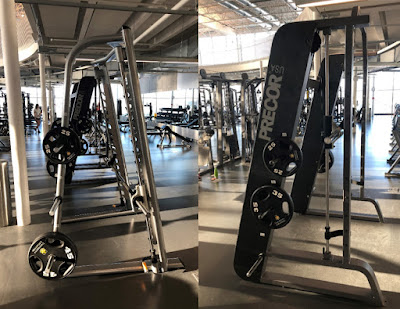How to Choose the Right Shoe for Exercising
by Adam Toffan, M.Sc, NSCA-CSCS, CSEP-CPT Assistant Fitness Training and Assessment Coordinator, Recreation Services at the University of Manitoba
One underrated piece of fitness attire is the shoe. People often put more focus on price or appearance and tend to overlook performance or how a shoe fits. Some also get very attached to their shoes and wear them much longer than they should. If you're currently looking down at your weathered shoes and thinking "It's time for a new pair", here are a few things to consider before you head to the store.
There are a lot of bells and whistles advertised in shoes, and it can be hard to determine what is legitimate. Many of the new technological advances are actually very helpful. However, the most significant tool you can arm yourself with is knowledge of your own feet and exercise habits. This will help guide you towards a shoe better designed for you and your needs.
One underrated piece of fitness attire is the shoe. People often put more focus on price or appearance and tend to overlook performance or how a shoe fits. Some also get very attached to their shoes and wear them much longer than they should. If you're currently looking down at your weathered shoes and thinking "It's time for a new pair", here are a few things to consider before you head to the store.
Get the right shoe for the activity.
For example. If you run, get a running shoe. If you do fitness classes that require a lot of lateral movement, you will need shoes that have more lateral stability. You need to ensure you have support in the right places to match the repetitive movements in your routine. With that in mind, it's also wise to avoid using the same shoes for various types of activity.Consider your own anatomy and biomechanics.
Not all feet are made the same, and many manufacturers have shoes that are designed with different foot types in mind. One thing to consider is your foot arch. If you don't know what your arches are like, you can find out using the wet test. Step into a little bit of water, then step on a piece of brown paper and trace your footprint before it dries. The end result will help you determine the shape of your foot. Another way to check is to look at the bottom of your current shoes to see what areas are the most worn. People with a narrow connecting arch will have more wear on the outside of their shoe and will have high arches which require a cushioned shoe with a soft midsole. On the flip side, if you have a full arch and the shoe wears evenly, you'll need a stability shoe.Adapt as your feet change.
As we age and move, our feet change typically resulting in fallen arches. So, having your feet assessed often is a wise approach.Don't over – or underpay.
You should be looking for a high-quality shoe, but you shouldn't have to break the bank. As a general rule, $15 footwear typically won't be better than $80 footwear, but be wary of the premium pricing that comes with celebrity-branded shoes. Try to get expensive shoes… but not pay too much for them. For instance, one way to save money is to buy last year's version of a higher-end shoe.Know when to replace your shoes.
The average shoe should be replaced within a year for most active people. You can go mainly by the look and feel. Once the back sole is worn or feels less supportive, it's time to find a new pair! Holding onto shoes for too long can lead to lots of issues including foot, shin, and knee pain.Lastly, and most importantly. Make sure it's a good fit!
Sometimes a shoe can be too wide, too narrow, or too shallow in the heel. Make sure your heel is securely locked in the shoe but not so tight you can't wiggle your toes. There should be about half a centimetre empty over the big toe to allow for foot swelling during exercise. Also, try to find a shoe with breathability that matches the conditions you exercise in. Less breathable for cold/rainy outdoor runs or something more breathable for hot summer days.There are a lot of bells and whistles advertised in shoes, and it can be hard to determine what is legitimate. Many of the new technological advances are actually very helpful. However, the most significant tool you can arm yourself with is knowledge of your own feet and exercise habits. This will help guide you towards a shoe better designed for you and your needs.






Comments
Post a Comment